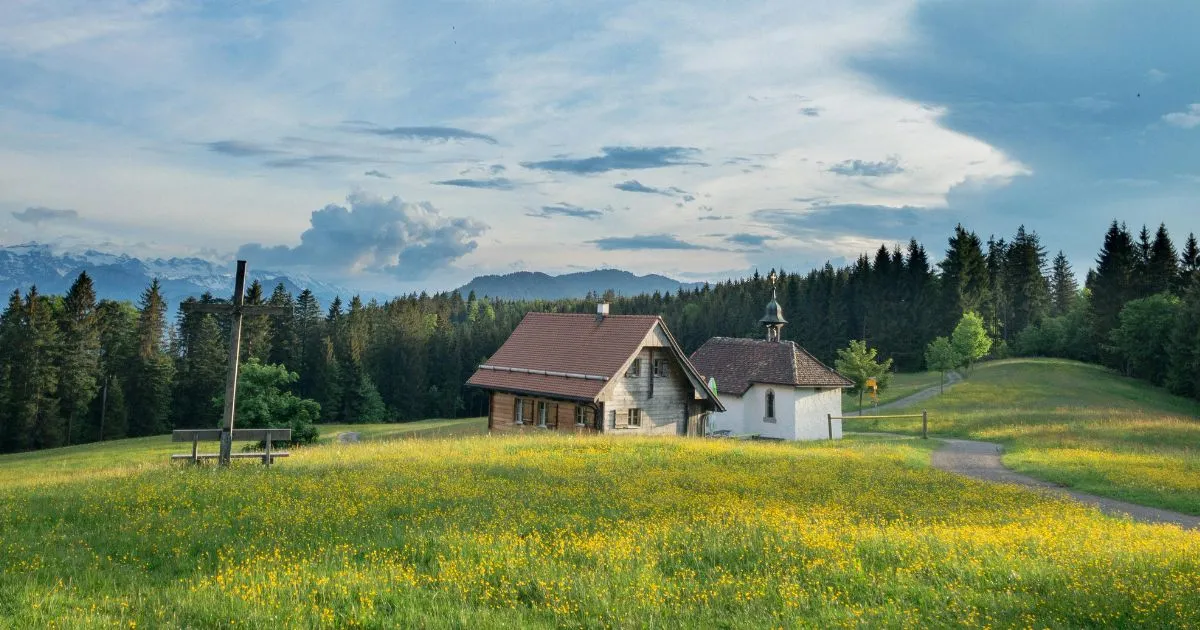Best Time to Visit Spain for Unforgettable Experiences
Spain, with its diverse landscapes, rich cultural heritage, world-renowned cuisine, and vibrant festivals, attracts millions of visitors each year. This Mediterranean jewel offers dramatically different experiences depending on when you visit, from the sun-drenched beaches of summer to the snow-capped Sierra Nevada mountains in winter. The best time to visit Spain varies significantly based on your preferred activities, regional destinations, budget considerations, and tolerance for crowds and climate conditions.
Table of Contents
Key Takeaways
- The overall best time to visit Spain for balanced experiences is during the spring (April to May) and fall (September to October)
- Summer (June to August) brings hot temperatures, crowded coastal areas, and higher prices but offers vibrant festivals and extended daylight hours
- Winter (December to February) provides opportunities for skiing, Christmas celebrations, and significantly lower tourist numbers except in major cities during holidays
- Spain’s diverse regions experience varied climates, with the north being cooler and wetter, while the south and Mediterranean coast remain mild even in winter
- Specific experiences like running with the bulls in Pamplona, La Tomatina, or Holy Week celebrations are available only during particular times of year
- Shoulder seasons offer the best combination of pleasant weather, fewer crowds, and more reasonable prices
Seasonal Breakdown for Spain Visits
Spring Season (March to May)
Spring represents one of the most delightful times to experience Spain, as the country emerges from its relatively mild winter into a season of renewal. From March through May, temperatures gradually rise while tourist crowds remain manageable, creating an excellent balance for visitors seeking pleasant conditions without the summer congestion.
Weather patterns vary considerably by region. In March, southern regions like Andalusia already enjoy comfortable daytime temperatures averaging 65°F to 75°F (18°C to 24°C), perfect for exploring cities like Seville, Córdoba, and Granada. Central Spain, including Madrid, starts cooler but warms up by April, while northern coastal regions like Galicia and the Basque Country remain cooler and experience more precipitation throughout spring.
April brings Spain’s landscapes to life with blooming wildflowers across the countryside. The famous cherry blossoms of Jerte Valley (Extremadura) typically peak in late March or early April, creating spectacular pink landscapes. May sees consistently warm weather throughout most of the country, though rarely reaching the uncomfortable heat of summer.
Spring coincides with some of Spain’s most significant cultural celebrations. Holy Week (Semana Santa) occurs in the week leading up to Easter, with particularly famous processions in Seville, Málaga, and Zamora. The April Fair in Seville follows shortly after, bringing colorful flamenco performances, traditional food, and revelry. Madrid celebrates its patron saint during the San Isidro Festival in mid-May with concerts, bullfights, and traditional activities.
This season offers ideal conditions for outdoor activities before summer heat intensifies. Hiking opportunities abound in regions like the Pyrenees, Picos de Europa, and Sierra Nevada as trails become accessible after winter. The Mediterranean coastline begins warming up for beach activities by late April, though water temperatures remain refreshing rather than warm.
Pros:
- Comfortable temperatures ideal for sightseeing and outdoor activities
- Spectacular blooming landscapes throughout the countryside
- Significant cultural celebrations, particularly around Easter
- Lower tourist numbers compared to summer months
- Generally more affordable accommodations and flights than peak season
- Green, lush countryside before summer’s heat
Cons:
- Variable weather conditions, with occasional rain showers, particularly in northern regions
- Water temperatures still cool for swimming until late May
- Some high-altitude hiking routes may remain inaccessible until late spring
- Easter week can see dramatically increased prices and crowds in certain cities
Summer Season (June to August)
Summer transforms Spain into the quintessential Mediterranean playground, bringing intense heat, vibrant festivals, and the country’s peak tourist season. June through August represents the busiest period throughout most of Spain, particularly in coastal regions and major cities, creating a high-energy atmosphere but also challenges for travelers seeking tranquility.
Weather conditions reach their annual extremes during summer. Southern and central Spain experience intense heat, with temperatures in cities like Seville, Córdoba, and Madrid regularly exceeding 95°F (35°C) and occasionally surpassing 104°F (40°C) during heat waves. Coastal regions benefit from sea breezes, making Barcelona, Valencia, and San Sebastián more comfortable, though still warm with temperatures typically ranging from 75°F to 85°F (24°C to 29°C).
Spain’s numerous summer festivals attract visitors from around the world. The Running of the Bulls during the San Fermín Festival in Pamplona occurs annually from July 7-14. La Tomatina, the famous tomato-throwing festival in Buñol near Valencia, takes place on the last Wednesday of August. Countless local town festivals (fiestas) occur throughout summer, offering authentic cultural experiences even in smaller destinations.
Beach tourism reaches its zenith during summer months. The Mediterranean coast, including the Costa Brava, Costa Dorada, and Costa del Sol, sees its highest visitor numbers, as do the Balearic Islands (Mallorca, Ibiza, Menorca) and the Canary Islands. Water temperatures reach their warmest levels, typically around 75°F (24°C) by August, ideal for swimming and water sports.
Summer presents unique advantages for certain activities. The extended daylight hours—with sunset often occurring after 9:30 PM—allow for packed sightseeing days. Northern Spain, including Galicia, Asturias, and the Basque Country, experiences its driest and warmest period, making summer the optimal time to explore this verdant region often compared to Ireland or Scotland in landscape.
Pros:
- Guaranteed warm, sunny weather throughout most of the country
- Vibrant atmosphere with numerous festivals and cultural events
- Ideal beach conditions with warm water temperatures
- Extended daylight hours for sightseeing and activities
- All tourist facilities operating at full capacity
- Best time to visit northern Spain’s green landscapes
Cons:
- Extreme heat in central and southern regions can make sightseeing uncomfortable
- Peak tourist crowds at major attractions, beaches, and restaurants
- Highest prices for accommodations, particularly in coastal areas
- Need for advance bookings for quality accommodations and popular restaurants
- Some locals leave cities for vacation, resulting in some neighborhood restaurants and shops closing
Autumn Season (September to October)
The best time to visit Spain is often during autumn, when the weather is pleasantly warm, crowds are lighter, and cultural events are in full swing. In September and October, temperatures range from 65°F to 85°F, ideal for sightseeing and coastal relaxation. The Mediterranean remains warm for swimming, and popular beach spots are far less crowded after early September.
Autumn is also harvest season, making it a great time for wine tourism in regions like Rioja, Penedès, and Jerez. Cities like Madrid and Barcelona come alive with festivals and a packed cultural calendar, offering an authentic and comfortable travel experience.
Pros:
- Ideal temperatures for sightseeing and outdoor activities
- Significantly reduced tourist crowds compared to summer
- Lower prices for accommodations and flights, particularly after early September
- Warm sea temperatures extending swimming season
- Beautiful countryside colors as vineyards and forests change hues
- Wine harvest festivals and activities
Cons:
- Increasing chances of rainfall, particularly in northern regions
- Some coastal businesses begin reducing hours or closing by mid-October
- Shorter daylight hours compared to summer
- Water temperatures gradually cooling by late October
- Variable conditions possible, especially in late autumn
Winter Season (November to February)
Winter in Spain offers a unique blend of snowy mountains, festive cities, and mild coastlines. From November to February, travelers can enjoy fewer crowds, lower prices, and seasonal charm across the country. Northern and central Spain tend to be cold and wet, while southern areas and the Mediterranean coast remain mild, making cities like Málaga and Alicante perfect for a sunny escape.
The ski season peaks in the Pyrenees and Sierra Nevada, while cultural attractions are quieter, allowing more intimate experiences. Holiday festivities light up December, especially around Christmas and Three Kings Day. For winter sun, the Canary Islands offer warm temperatures and are a favorite seasonal getaway.
Pros:
- Minimal tourist crowds at major attractions
- Significantly reduced prices for accommodations in most regions
- Authentic cultural experiences with higher ratios of locals to tourists
- Skiing opportunities in multiple mountain ranges
- Christmas celebrations and traditions
- Pleasant conditions in southern coastal areas and Canary Islands
Cons:
- Cooler temperatures requiring warmer clothing
- Higher precipitation, particularly in northern regions
- Shorter daylight hours limiting sightseeing time
- Some coastal businesses and attractions closed or operating limited hours
- Reduced outdoor dining options except in southernmost regions
- Higher prices during the Christmas holiday period
Best Time Based on Spanish Regions
Best Time to Visit Madrid and Central Spain
Madrid and the central plateau (meseta) experience continental climate extremes, making spring (April to June) and fall (September to October) the most pleasant periods to visit. These months offer comfortable temperatures ideal for exploring the capital’s world-class museums, elegant parks, and vibrant neighborhoods, especially if you’re planning around the best time to visit Spain.
Summer brings intense heat to Madrid, with July and August temperatures regularly exceeding 90°F (32°C), though the dry heat is somewhat more bearable than humid conditions elsewhere. Many locals leave the city in August, resulting in some neighborhood restaurants and shops closing, though major tourist attractions remain open.
Winter in Madrid brings cold conditions with occasionally freezing temperatures, but clear, sunny days are common between December and February. The city rarely shuts down due to weather and offers excellent cultural activities, reduced crowds, and lower accommodation prices during these months, making it a smart pick depending on your priorities for the best time to visit Spain.
Best Time to Visit Barcelona and Catalonia
Barcelona and the Catalonian coast benefit from Mediterranean climate patterns, with a wider range of comfortable visiting times. The optimal periods are May to June and September to October, when temperatures remain pleasant for combining urban exploration with beach time, and tourist crowds are less intense than during peak summer.
July and August bring hot conditions and peak tourist numbers to Barcelona, creating an energetic but sometimes overwhelmingly crowded atmosphere, particularly along Las Ramblas and at popular Gaudí sites. Advance booking becomes essential during these months.
Winter remains mild in Barcelona, with daytime temperatures typically above 55°F (13°C), making it a viable year-round destination. The city maintains an active cultural calendar throughout winter months, though beach activities become limited to strolling rather than swimming.
Best Time to Visit Andalusia (Southern Spain)
Andalusia’s timing considerations differ significantly from northern Spain due to its southerly location and extreme summer heat. The ideal times to visit cities like Seville, Córdoba, and Granada are April to May and September to October, when temperatures remain comfortable for exploring these walkable historic cities—often considered part of the best time to visit Spain.
Summer (particularly July and August) brings potentially debilitating heat to inland Andalusia, with temperatures regularly exceeding 100°F (38°C). Many businesses adapt with afternoon closures during the hottest hours. Coastal Andalusia, including destinations like Málaga and Cádiz, remains more comfortable due to sea breezes.
Winter offers a compelling case for visiting Andalusia, with mild temperatures typically ranging from 55°F to 65°F (13°C to 18°C) and significant sunshine. This creates ideal conditions for cultural exploration without summer crowds, reinforcing its appeal for those seeking the best time to visit Spain away from peak season.
Best Time to Visit Northern Spain (Galicia, Asturias, Cantabria, Basque Country)
Spain’s verdant northern coast follows different optimal timing than the rest of the country due to its oceanic climate. Summer (June through September) represents the best period for visiting this region, offering the most reliable weather with moderate temperatures and reduced rainfall—ideal for those planning the best time to visit Spain’s greener side.
This “Green Spain” experiences significant precipitation throughout the year, contributing to its lush landscapes, but summer months statistically offer more sunshine and fewer rainy days. July and August bring comfortable temperatures typically ranging from 68°F to 77°F (20°C to 25°C).
Spring and fall can offer enjoyable conditions for exploring northern Spain with fewer tourists, though visitors should be prepared for increased rainfall and variable conditions. Winter brings cool, wet weather that limits outdoor activities, though cities like Bilbao, San Sebastián, and Santiago de Compostela maintain vibrant cultural calendars and significantly reduced accommodation rates, making it a lesser-known but rewarding option for the best time to visit Spain on a budget.
Best Time to Visit Spanish Islands (Balearics and Canaries)
The Balearic Islands (Mallorca, Menorca, Ibiza, Formentera) follow Mediterranean patterns, with the optimal visiting period being May to June and September to October. These shoulder seasons offer warm temperatures ideal for beach activities but without the intense crowds and premium pricing of July and August, often considered the best time to visit Spain for island getaways.
The Canary Islands follow a completely different pattern due to their location off Africa’s Atlantic coast. Their climate remains spring-like year-round, making them a true 12-month destination. The islands experience their highest tourist numbers during European winter (December through March) when northern visitors seek winter sunshine, further highlighting how the best time to visit Spain varies by region.
Best Time Based on Specific Interests and Activities
Best Time for Cultural Festivals
Spain’s festival calendar influences many travelers’ timing decisions:
Holy Week (Semana Santa) – The week before Easter (dates vary each year) features Spain’s most dramatic religious processions, with Seville, Málaga, and Zamora hosting particularly renowned celebrations.
Las Fallas – This spectacular festival of fire takes place in Valencia from March 15-19, featuring enormous sculptural installations that are ultimately burned in a dramatic finale.
San Fermín – Pamplona’s famous Running of the Bulls occurs July 7-14 annually, attracting thrill-seekers from around the world.
La Tomatina – The world’s largest tomato fight happens in Buñol (near Valencia) on the last Wednesday of August.
La Mercè – Barcelona’s main festival occurs in late September, featuring human towers, fire runs, and street performances.
Those planning trips around specific festivals should book accommodations far in advance, as prices increase dramatically and availability becomes limited during these events.
Best Time for Beach Vacations
Spain’s extensive coastline offers beach experiences with timing considerations that vary by region:
Mediterranean Beaches – The traditional beach season runs from June through September, with water temperatures warmest in August and early September. May and October can offer enjoyable beach weather with significantly fewer crowds.
Atlantic Beaches – Northern Spain’s coastline has a shorter beach season, typically from late June through August, with water temperatures remaining cooler than the Mediterranean.
Canary Islands – These Atlantic islands offer year-round beach conditions, with water temperatures remaining swimmable even in winter months, though somewhat cooler than summer.
For the ideal combination of warm conditions and reasonable crowd levels, early June and September offer excellent beach experiences throughout most of Spain’s coastline.
Conclusion
The best time to visit Spain ultimately depends on your specific interests, regional focus, and tolerance for various climatic conditions. For most travelers seeking a balanced experience, the shoulder seasons of spring (April to May) and autumn (September to October) offer the most favorable combination of pleasant weather, manageable crowd levels, and reasonable prices throughout most of the country.
Those primarily interested in beach vacations will naturally gravitate toward summer months, despite higher costs and crowds, while winter visitors can enjoy cultural experiences with minimal tourist competition and take advantage of Spain’s skiing opportunities or the year-round mild climate of the Canary Islands.
Spain’s regional diversity means that there is always some part of the country experiencing ideal conditions, regardless of when you visit. Understanding these regional variations and aligning your itinerary with optimal timing for each area can create a more enjoyable experience, whether you’re exploring the medieval streets of Toledo, surfing in the Basque Country, or savoring tapas in a Seville plaza.
Rather than seeking a single perfect time for visiting Spain, consider what experiences matter most for your journey and plan accordingly. The country’s rich cultural heritage, diverse landscapes, and remarkable culinary traditions offer rewarding experiences in every season, each with its own distinctive character and charm.







